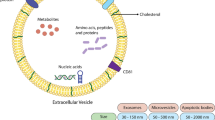Abstract
Biodegradable polymeric nanoparticles conjugated with targeting vector molecules have become prospective agents to improve the effectiveness of chemotherapeutic cancer treatment. This approach reduces the systemic toxicity of the drugs and increases the specificity of their uptake by cancer cells. A method has been developed to obtain complex nanoparticles loaded with the antitumor drug paclitaxel and a C-terminal fragment of recombinant oncofetal alpha-fetoprotein serving as a vector molecule, the in vitro cytotoxic activity of complex nanoparticles for MCF-7 human breast adenocarcinoma cells and resistant MDR1+ cells of the MCF-7Adr subline was shown to be higher than the cytotoxicity of the free drug and drug-loaded nanoparticles without the vector molecule. Moreover, the toxicity of complex paclitaxel-loaded nanoparticles against lymphocytes was low, which confirmed the selectivity of nanoparticle action. In summary, these results demonstrate that the strategy of active targeting of nanoparticles can efficiently enhance the antitumor activity of paclitaxel and it can solve the problem of reversing the multidrug resistance (MDR) of tumor cells.
Similar content being viewed by others
References
O. C. Farokhzad, J. Cheng, B. A. Teply, et al., PNAS 103, 6315 (2006).
P. Kocbek, N. Obermajer, M. Cegnar, et al., J. Control. Release 120, 18 (2007).
S. K. Sahoo, W. Ma, and V. Labhasetwar, Int. J. Cancer 112, 335 (2004).
F. Esmaeili, M. H. Ghahremani, S. N. Ostad, et al., J. Drug. Target 16 (5), 415 (2008).
F. Danhier, B. Vroman, N. Lecouturier, et al., 140, 166 (2009).
C. Esteban, M. Geuskens, and J. Uriel, Int. J. Cancer 49(3), 425 (1991).
R. Moro, J. Tcherkassova, E. Song, et al., IVD Technol. Mag. 11, (2005). http://www.ivdtechnology.com/arti-cle/new-broad-spectrum-cancer-marker
M. B. Nitsvetov, E. Yu. Moskaleva, G. A. Posypanova, et al., Immunologiya 26, 122 (2005).
A. V. Godovannyi, M. V. Savvateeva, A. I. Sotnichenko, et al., Mol. Med., No. 1, 44 (2011).
G. A. Posypanova, N. V. Gorokhovets, V. A. Makarov, et al., J. Drug. Target 16(4), 321 (2008).
E. S. Severin and A. V. Rodina, Usp. Biol. Khim 46, 43 (2006).
J. K. Vasir and V. Labhasetwar, Adv. Drug. Deliv. Rev. B 59, 718 (2007).
T. Mossman, J. Immunol. Meth. 65(1, 2), 55 (1983).
Y. Jiang, X. Guo, and X. Tian, Carbohydrate Polym. 61, 399 (2005).
S. K. Sahoo, J. Panyama, S. Prabhaa, et al., J. Control. Release 82, 105 (2002).
N. P. Desai, C. Tao, A. Yang, et al., USA Patent No. 20046749868B1 (2004).
M. B. Nitsvetov, A. V. Rodina, E. B. Moskaleva, et al., Vopr. Biol. Med. Farmats. Khim. 3, 19 (2001).
E. S. Severin, A. V. Karaulov, E. Yu. Moskaleva, et al., Mol. Med., No. 2, 57 (2003).
N. Zhang, C. Chittapuso, C. Ampassavate, et al., Bioconjug. Chem. 19, 145 (2008).
J. Changa, Y. Jallouli, M. Kroubi, et al., Int. J. Pharmaceut. 379, 285 (2009).
S. K. Sahoo and V. Labhasetwar, Mol. Pharm. 2, 373 (2005).
J. Panyam, W. Z. Zhou, S. Prabha, et al., Faseb. J. 16, 1217 (2002).
Author information
Authors and Affiliations
Corresponding author
Additional information
Original Russian Text © A.V. Godovannyi, E.A. Vorontsov, N.V. Gukasova, N.V. Pozdnyakova, E.A. Vasilenko, N.G. Yabbarov, S.E. Severin, E.S. Severin, N.V. Gnuchev, 2012, published in Rossiiskie Nanotekhnologii, 2012, Vol. 7, Nos. 1–2.
Rights and permissions
About this article
Cite this article
Godovannyi, A.V., Vorontsov, E.A., Gukasova, N.V. et al. Antitumor activity of targeted nanosome delivery systems based on poly(lactic-co-glycolic acid) nanoparticles, paclitaxel, and a recombinant alpha-fetoprotein fragment. Nanotechnol Russia 7, 76–84 (2012). https://doi.org/10.1134/S1995078012010077
Received:
Accepted:
Published:
Issue Date:
DOI: https://doi.org/10.1134/S1995078012010077




